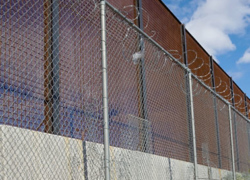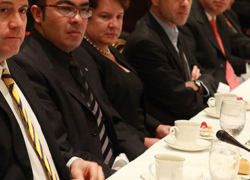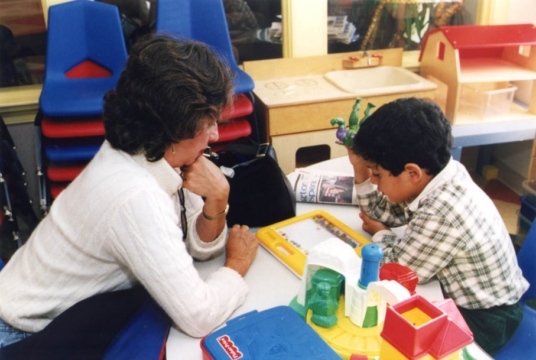Andrés Manuel López Obrador (better known as AMLO), President of Mexico, announced earlier this spring that he was signing a presidential memorandum to his education and finance and public credit secretaries ordering them to cancel the education reform passed by his predecessor six years ago. Although axing the constituional reform had been a central campaign pledge of AMLO’s throughout 2018, his decision to do so via presidential fiat instead of pursuing legislative action had many critics arguing that the move was not just impracticable—five years into its implementation, the reform cannot simply be “undone” with the flick of a pen—but also legally and constitutionally questionable. Several weeks later, AMLO managed to get a counterreform passed through Congress; one that, although nominally in the spirit of the original reform, was essentially a defanged version that lacked the strong accountability and evalution measures that many hoped would make the initial reform so effective. Whether or not these critical pieces of Mexico’s education reform are eventually reinstated, and what such a process might look like, is important on a regional level, as well. In recent decades, many of Latin America’s education systems have made similar attempts at reform and been confronted with similar challenges to policy continuity and implementation. Arguably the heart of many of these efforts—including Mexico’s—is an attempt to improve the quality of education, and therefore student learning. Teachers have consistently been recognized as a key determinant of education quality and improving teacher policy has been a central component of essentially every reform.
The regional panorama presented below considers the current state of teacher policies across fourteen Latin American countries. The panorama was developed as part of the work of the Latin American Coalition for Teaching Excellence, an initiative of the Dialogue’s Education program in collaboration with the Varkey Foundation and INICIA Education (to see the full details of the Panorama, click here). The document suggests that there is much that we can learn from taking a regional view of teacher policy. This perspective allows us to answer such questions as: Where are there bottlenecks and in what areas has progress been made? Are there certain areas where a regional approach may make sense or where a shared effort could move the needle towards addressing persistent and confounding challenges? What are specific examples where countries have been successful at developing solutions that might work in other contexts? The Panorama considers five dimensions: Initial teacher education, teaching career, school leadership, continuing professional development and school leadership.
Initial teacher education

Most countries in Latin America use some form of standardized assessment as an admissions requirement to study education. In many cases, this evaluation is either a high school graduation test (for example in Colombia, Ecuador and El Salvador) or a university entrance exam (as is the case in Brazil, Chile and Mexico). Other admissions criteria, such as minimum GPA in secondary school, interviews or aptitude tests, are much less frequently considered. Beyond simply establishing minimum entry requirements, Chile stands out for having taken additional steps to attract high-performing secondary students to the teaching profession through the Beca Vocación de Profesor, a scholarship for students who score about one standard deviation above the average on the national university entrance exam and decide to study education.
Ensuring the quality of teacher training institutions has been a major concern of many reform efforts. Countries have made strong efforts towards establishing curriculum frameworks for teacher education, but there is still insufficient information regarding the implementation and relevance of these documents. Another important step has been to increase the level of education required to be a teacher in Latin America. Although essentially all initial teacher education takes place at the tertiary level now (as opposed to the secondary level), accreditation systems remain uneven. Most Latin American countries have developed some form of accreditation process for universities and degree programs, but there are only a few countries (Argentina, Chile, Ecuador, Guatemala and Panama) where the majority of teacher training programs are actually accredited.
Teaching career

Countries across Latin America have taken the important step of establishing clear and transparent standards for entering the public teaching force through competitive concursos—although in some countries, such as Honduras, these competitions are seen as being influenced by political interests. Once teachers have been hired, however, most positions are essentially permanent, and current career ladders tend to reward seniority and title accumulation instead of performance. In Colombia and Ecuador, recent policy changes have established provisional contracts for teachers when they are first hired to ensure that they meet minimum professional standards before being offered a tenured position. Meanwhile, Chile has developed a merit-based career ladder where teachers must progress to at least the third of five steps (Advanced) or risk being fired. Other countries, such as Peru, Colombia, Ecuador and Mexico, offer salary incentives tied to teacher performance on national evaluations (see section on Teacher Evaluation). For many teachers in Latin America, however, the reality is that if they want to substantially increase their salary or take on additional professional responsibilities, they will need to leave the classroom and move in to school administration and management.
Teacher salaries remain a point of contention and tension throughout the region and can quickly subsume any other discussion of teacher policy reform. In reality, teacher salaries are a mixed bag. In Mexico and most of Central America, teacher compensation is comparable to other professions with a similar level of education and experience. In many parts of South America, however, teacher salaries remain quite low. For example, in Peru and Chile, teachers earn only about half of what other professionals who share their gender, age and education levels receive. In countries such as Argentina and Brazil, where education systems are highly decentralized, teacher pay can vary dramatically by province or state, but still are not considered competitive.
School leadership

School directors are frequently referred to as the “forgotten stakeholders” in education reform efforts. This may be because they are, in effect, school administrators, not pedagogical leaders. One telling example of their lack of empowerment is the fact that many school directors are unable to make key decisions about their own teaching teams. Chile is essentially the only country in Latin America where principals can fire ineffective teachers (and even then, their ability to do so is limited).
A second bottleneck to developing stronger school leadership is the lack of a clear career path and professional development framework for school directors. In fact, there have been few comprehensive studies of what type of training school directors do receive and its effects on student achievement. Two country-level programs attempt to offer school directors greater opportunities to develop their leadership and management skills. In Argentina, the Varkey Foundation works with the National Teacher Development Institute (INFoD) to offer principals in four provinces a six-week, intensive training to strengthen their educational leadership and innovation skills. In the Dominican Republic, the Ministry of Education began running a “School for Principals” in 2012 to offer continuous professional development for school leaders. Initial studies suggest a positive correlation between student learning outcomes and principals’ participation in the program.
Continuing professional development

Teachers should continue to grow and improve professionally throughout their careers, and strong professional development programs should give teachers concrete, practicable skills and knowledge to improve learning outcomes for their students. Although many countries in Latin America have a long history of providing in-service professional development courses, efforts to align these offerings with the actual, day-to-day needs of teachers in the classroom are still nascent. One significant challenge is the lack of rigorous data regarding teacher performance, which prevents a serious analysis of potential gaps or areas for improvement. Nevertheless, a few countries have begun taking a more data-driven approach to their professional development offerings. For example, Ecuador has begun using student results from the national Ser exams as an input for determining priority areas for teacher professional development.
Mentorship and coaching programs, while hardly universal and often small in scale, can also offer critical support, especially to new teachers, and promote school-based collaboration among colleagues. Mexico and Peru offer two promising examples of this model: In Mexico, new teachers receive support from a tutor for two years and complete a diagnostic evaluation after their first year in the classroom. Peru launched the “Inducción Docente” program in 2016, which includes various pedagogical supports for new teachers, with a particular focus on mentorship.
Teacher evaluation

While most people might agree that performance evaluations for teachers can provide important feedback, both for teachers themselves and the education system in general, any subsequent question—how to measure teacher performance, what should be the consequences of strong/poor performance—is sure to provoke heated debate. The result is that the majority of countries in Latin America have implemented teacher evaluations, but in many cases, these systems lack transparency, technical independence and impact. Several countries, notably Chile, Colombia, Ecuador, Mexico and Peru have been able to develop and implement teacher evaluation systems that are politically independent and seen as being rigorous and credible. In Chile, the national teacher evaluation is called Docente Más, and includes multiple components to determine the level of performance of each teacher, including a portfolio of work, an interview, professional references and a self-evaluation. Additionally, there is evidence that this evaluation system is in fact able to identify the most effective teachers in terms of value-added to student learning.
For those education systems that do have robust teacher evaluations, a subsequent challenge is figuring out how to use the data that they produce to make more effective decisions. Data-informed decision-making can occur at both the school level (to help school directors and teachers reflect on their own practices) and the public policy level (to inform policymaking and provide ministries with feedback on the effectiveness of existing efforts). Unfortunately, this remains an area of considerable challenges for Latin American countries. For example, in Costa Rica, although principals in theory receive school-level student learning results, there is no formal mechanism to support their analysis or understanding of these results, let alone sharing them with teachers. Likewise, in Mexico, the process of administering a diagnostic evaluation to each teacher has taken years and many teachers failed to receive their results even after being evaluated. In Peru, however, evaluations help identify teachers who may need additional training or support. Educators who receive a grade of “very deficient” on their performance evaluations must receive six months of professional development courses before they are reevaluated.
This regional panorama seeks to highlight several policy areas where there are persistent bottlenecks across the region, as well as illustrate successful examples from countries that have made strong progress towards addressing and improving these challenges. What is clear is that, at least in terms of teacher policies, countries tend to have more in common that that which divides them, and that, while there has been progress in some areas, much work remains in others. Additionally, strength in one dimension tends to correlate with progress in other teacher policy dimensions, suggesting that these are mutually reinforcing relationships and that strong school leadership can support improved professional development opportunities for teachers, which are linked to better career ladders and so on.



























